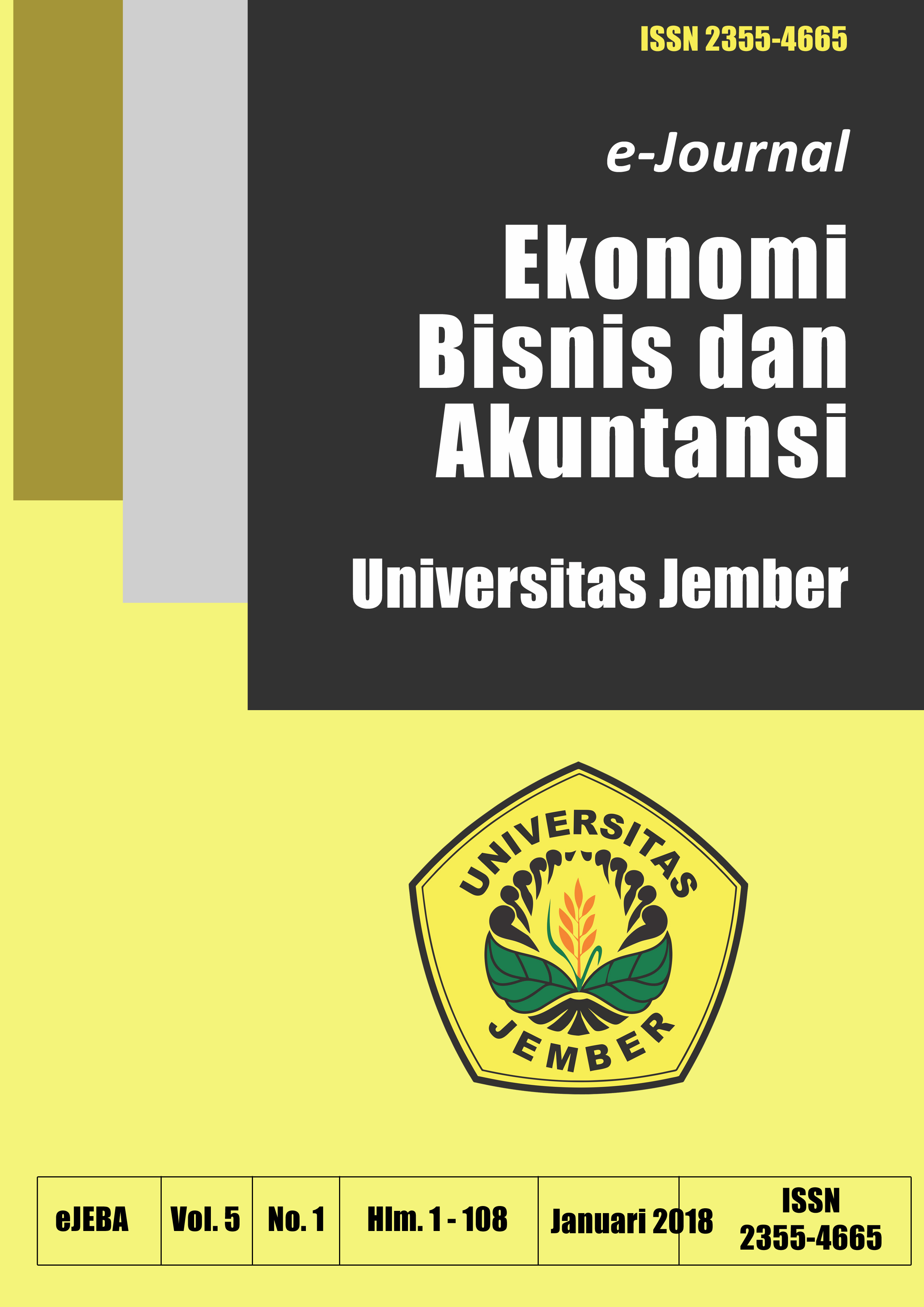Analisis Nilai Produksi pada Industri Kerajinan Tangan di Desa Tutul Kecamatan Balung Kabupaten Jember
Abstract
The main problem of this research was about the value of production in the handicraft industry in the village Tutul subdistrict Balung district Jember. This research was aimed to describe the factors that influence the value of production in the handicraft industry in the village Tutul subdistrict Balung district Jember. This research belongs to explanatory survey. This type of data are primary data, including data on the number of labor wages, capital, and production value. The method of this Research is ordinary least square (OLS). The result of this data shows that capital and amount and manpower have affected value of production, but wage haven’t affected value of production in the handicraft industry in the village tutul subdistrict Balung district jember. The research showed the implication that the use of capital by entrepreneurs handicraft is not maximized and need a support from the government, the capital should also get support from the local government to provide facilities to Kredit Usaha Rakyat (KUR). Handicraft industry in the village Tutul also still using traditional machines and therefore entrepreneurs need to boost employment and improve the quality of their performance.
Keywords: Value of production, amount of manpower, capital and wage

















